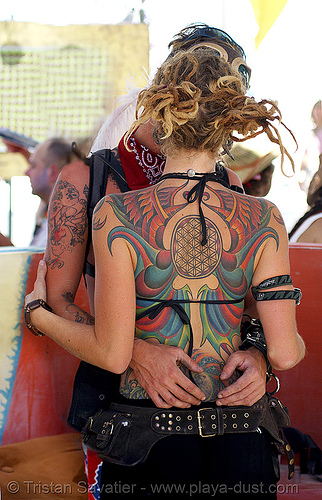 Kuan Yin (also spelled Guan Yin, Kwan Yin) is the bodhisatwa of compassion venerated by East Asian Buddhists. Commonly known as the Goddess of Mercy, Kuan Yin is also revered by Chinese Taoists as an Immortal. The name Kuan Yin is short for Kuan Shih Yin (Guan Shi Yin) which means "Observing the Sounds of the World".
Kuan Yin (also spelled Guan Yin, Kwan Yin) is the bodhisatwa of compassion venerated by East Asian Buddhists. Commonly known as the Goddess of Mercy, Kuan Yin is also revered by Chinese Taoists as an Immortal. The name Kuan Yin is short for Kuan Shih Yin (Guan Shi Yin) which means "Observing the Sounds of the World".In Japanese, Kuan Yin is called Kannon or more formally Kanzeon; the spelling Kwannon, resulting from an obsolete system of romanization, is sometimes seen. In Korean, she is called Kwan-um or Kwan-se-um. In Vietnamese, she is called Quan Âm .
Kuan Yin is the Chinese name for the bodhisatwa Avalokitesvara. However, folk traditions in China and other East Asian countries have added many distinctive characteristics and legends. Most notably, while Avalokitesvara can be depicted as either male or female, Kuan Yin is usually depicted as a woman, whereas Avalokitesvara in other countries is usually depicted as a man.
Along with Buddhism, Kuan Yin's veneration was introduced into China as early as the 1st century CE, and reached Japan by way of Korea soon after Buddhism was first introduced into the country from the mid-7th century.
 Representations of the bodhisattva in China prior to the Song Dynasty (960-1279) were masculine in appearance. Images which later displayed attributes of both genders are believed to be in accordance with the Lotus Sutra, where Avalokitesvara has the supernatural power of assuming any form required to relieve suffering and also has the power to grant children. Because this bodhisattva is considered the personification of compassion and kindness, a mother-goddess and patron of mothers and seamen, the representation in China was further interpreted in an all female form around the 12th century. In the modern period, Kuan Yin is most often represented as a beautiful, white-robed woman, a depiction which derives from the earlier Pandaravasini form.
Representations of the bodhisattva in China prior to the Song Dynasty (960-1279) were masculine in appearance. Images which later displayed attributes of both genders are believed to be in accordance with the Lotus Sutra, where Avalokitesvara has the supernatural power of assuming any form required to relieve suffering and also has the power to grant children. Because this bodhisattva is considered the personification of compassion and kindness, a mother-goddess and patron of mothers and seamen, the representation in China was further interpreted in an all female form around the 12th century. In the modern period, Kuan Yin is most often represented as a beautiful, white-robed woman, a depiction which derives from the earlier Pandaravasini form.Why Avalokiteshwor have 1000 arms?A character known as Kuan Yin is also mentioned in the Book of Lie Zi as a Taoist sage, but it is unclear if this refers to the Kuan Yin later venerated as a bodhisattva.One Buddhist legend presents Avalokitesvara as vowing to never rest until he had freed all sentient beings from samsara. Despite strenuous effort, he realized that still many unhappy beings were yet to be saved. After comprehending the great demand, he became overwhelmed and his head split into thousands of pieces.
Later, Buddha Amitava assembled him back together again. With eleven heads gazing to the front and sides, Avalokiteshvara possesses the unique gift to see everywhere at once and reach out to the needy.
Read Full STORY OF 1,000 ARMS AVLOKITESHWOR
In China, it is said that fishermen used to pray to her to ensure safe voyages. The titles 'Kuan Yin of the Southern Ocean' and 'Kuan Yin (of/on) the Island' stem from this tradition.
 Another story, possibly Taoist in origin, describes Kuan Yin as the daughter of a cruel father who wanted her to marry a wealthy but uncaring man. She begged to be able to enter a temple and become a nun instead. Her father allowed her to work in the temple, but asked the monks to give her very hard chores in order to discourage her. The monks forced Kuan Yin to work all day and all night, while others slept, in order to finish her work. However, she was such a good person that the animals living around the temple began to help her with her chores. Her father, seeing this, became so frustrated that he attempted to burn down the temple. Kuan Yin put out the fire with her bare hands and suffered no burns. Now struck with fear, her father ordered her to be put to death. After she died she was made into a goddess for all of her kindness and began her journey to heaven. She was about to cross over into heaven when she heard a cry of suffering back on earth. She asked to be sent back and vowed to stay until all suffering had ended.
Another story, possibly Taoist in origin, describes Kuan Yin as the daughter of a cruel father who wanted her to marry a wealthy but uncaring man. She begged to be able to enter a temple and become a nun instead. Her father allowed her to work in the temple, but asked the monks to give her very hard chores in order to discourage her. The monks forced Kuan Yin to work all day and all night, while others slept, in order to finish her work. However, she was such a good person that the animals living around the temple began to help her with her chores. Her father, seeing this, became so frustrated that he attempted to burn down the temple. Kuan Yin put out the fire with her bare hands and suffered no burns. Now struck with fear, her father ordered her to be put to death. After she died she was made into a goddess for all of her kindness and began her journey to heaven. She was about to cross over into heaven when she heard a cry of suffering back on earth. She asked to be sent back and vowed to stay until all suffering had ended.One version of this legend states that, at the point of Kuan Yin's father's execution of her, a supernatural tiger took Kuan Yin to one of the more hell-like realms of the dead. However, instead of being punished by demons like the other inmates, Kuan Yin played music and flowers blossomed around her. This managed to completely surprise the head demon. The story says that Kuan Yin, by being in that hell, turned it into a paradise.
Due to her symbolising compassion, in East Asia Kuan Yin is associated with vegetarianism. Chinese vegetarian restaurants are generally decorated with her image, and she appears in most Buddhist vegetarian pamphlets and magazines.
Story From Religion of Facts
Print This Page











































